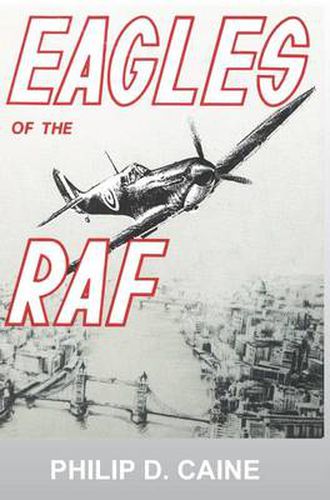Readings Newsletter
Become a Readings Member to make your shopping experience even easier.
Sign in or sign up for free!
You’re not far away from qualifying for FREE standard shipping within Australia
You’ve qualified for FREE standard shipping within Australia
The cart is loading…






This title is printed to order. This book may have been self-published. If so, we cannot guarantee the quality of the content. In the main most books will have gone through the editing process however some may not. We therefore suggest that you be aware of this before ordering this book. If in doubt check either the author or publisher’s details as we are unable to accept any returns unless they are faulty. Please contact us if you have any questions.
Orginally published in 1991. From the foreword: Although the United States did not enter World War II until the end of 1941, US citizens fought and died in the war long before the Japanese attacked Pearl Harbor. Among them were the pilots of the Eagle Squadrons, three fighter squadrons of Britain’s Royal Air Force manned by young US flyers risking their lives in another nation’s war. In this book, Colonel Philip D. Caine, US Air Force, tells how the Eagle Squadrons were formed, describes their RAF experiences, and evaluates their contribution to Britain’s defense. Unlike other accounts, Eagles of the RAF is not simply a paean to the pilots as special heroes and aces, though many performed heroically and some sacrificed their lives. Drawing almost exclusively on interviews with more than thirty-five surviving Eagles, on their letters and memoirs, and on official records of the squadrons, Caine shows who these men were and what drove them to endure the burdens of joining a foreign air force. We see them adjusting to life in a new country as they train, fly patrol and escort missions, and sit on alert in dispersal huts or in airplane cockpits. We see their routine suddenly shattered by the momentary chaos and exhilaration of aerial combat. The Eagles’ story is a unique chapter in American military history; it deserves to be told as it really happened-not as romanticized by Hollywood or nostalgic recollection. Beyond reliably telling the story, Colonel Caine reveals much about why people enter the military, how military life satisfies or disappoints their preconceptions, and how at least some of them reacted to the realities of combat.
$9.00 standard shipping within Australia
FREE standard shipping within Australia for orders over $100.00
Express & International shipping calculated at checkout
This title is printed to order. This book may have been self-published. If so, we cannot guarantee the quality of the content. In the main most books will have gone through the editing process however some may not. We therefore suggest that you be aware of this before ordering this book. If in doubt check either the author or publisher’s details as we are unable to accept any returns unless they are faulty. Please contact us if you have any questions.
Orginally published in 1991. From the foreword: Although the United States did not enter World War II until the end of 1941, US citizens fought and died in the war long before the Japanese attacked Pearl Harbor. Among them were the pilots of the Eagle Squadrons, three fighter squadrons of Britain’s Royal Air Force manned by young US flyers risking their lives in another nation’s war. In this book, Colonel Philip D. Caine, US Air Force, tells how the Eagle Squadrons were formed, describes their RAF experiences, and evaluates their contribution to Britain’s defense. Unlike other accounts, Eagles of the RAF is not simply a paean to the pilots as special heroes and aces, though many performed heroically and some sacrificed their lives. Drawing almost exclusively on interviews with more than thirty-five surviving Eagles, on their letters and memoirs, and on official records of the squadrons, Caine shows who these men were and what drove them to endure the burdens of joining a foreign air force. We see them adjusting to life in a new country as they train, fly patrol and escort missions, and sit on alert in dispersal huts or in airplane cockpits. We see their routine suddenly shattered by the momentary chaos and exhilaration of aerial combat. The Eagles’ story is a unique chapter in American military history; it deserves to be told as it really happened-not as romanticized by Hollywood or nostalgic recollection. Beyond reliably telling the story, Colonel Caine reveals much about why people enter the military, how military life satisfies or disappoints their preconceptions, and how at least some of them reacted to the realities of combat.